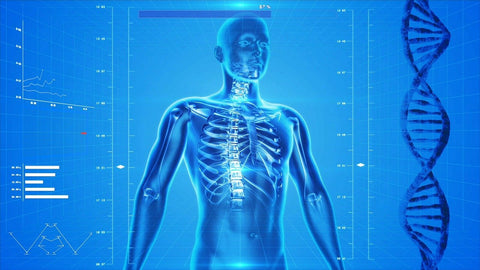Meet the Lactobacillus Team
Like a football team with its separate offensive and defensivesides and positions, our symbiotic team of probiotics is also multifaceted. We
haveLactobacillus organisms andBifidobacteria (plus some others) throughout
our bodies. They
are identified by genus, species and, occasionally, strain. For example,Lactobacillus reuteri RC-14. Unlike a
football team, however, every member of Team Symbion plays defense and the
goal is to protect and nourish the host (thats us) while simultaneously
creating an ideal environment for our microbiome (thats them). Its a win-win
situation.
BothLactos and Bifidos can be used to revive the gut
and/or urogenital tract following radiation, chemotherapy, prescription
antibiotic use or a bout of diarrhea, all of which diminish our beneficial
bacteria population. In this newsletter we will present some of ourLactobacillus teammates. (SeePart 1 .)
The Starting Lineup
Lactobacillus organisms are found primarily in our digestivetract, particularly the small intestine, the mouth and the urogenital tract.
The star quarterback of theLacto side
isL. acidophilus, an organism that
breaks down lactose (milk sugar). This good bug is useful for treating both
diarrhea and constipation, flatulence and irritable bowel syndrome (IBS). It
can also be helpful to those with gastric ulcers because of its action againstH. pylori, bacteria that attack the
stomach lining making the underlying tissues vulnerable to stomach acid.L. acidophilus is a special friend to
women because it contributes to the wellbeing of the vagina, cervix and uterus.
In addition, it suppressesCandida albicans, Trichamonas vaginalis, andE. coli, all of which can cause urinary
tract and other infections in both men and women. Also,L. acidophilus fights viruses and parasites directly and aids immune
function by stimulating production of antibodies, endogenous antibiotics and lactic
acid. These amazing microbes also produce vitamin K and increase iron
absorption. Conditions for whichL. acidophilus may be helpful are quite varied: mouth ulcers, allergies, itching,
atopic eczema, colds, flu, chronic fatigue syndrome, herpes simplex 1 and
insulin resistance.L. acidophilus may
help prevent opportunistic infections associated with AIDS and, according to
research published inWorld Journal of Gastroenterology, inhibit initiation or progression of carcinogenesis in
colon cancer cells.
Lactobacillus rhamnosus (akaLactobacillus GG) is acid-resistant
and highly bioavailable with actions similar toL. acidophilus. It is useful for stomach flu, colitis, ulcerative
colitis, Crohns, gastric ulcers, IBS, small intestinal bacterial overgrowth
(SIBO) and diarrhea, especially when rotavirus is the cause. It may also
protect the gastric mucosa from damage due to alcohol and it helps to reverse
intestinal permeability. Outside the digestive tract,L. rhamnosus is helpful for UTIs and vaginal infections, food
allergies, flu, atopic dermatitis and rheumatoid arthritis. It can reduce
damage from aflatoxin and decrease C-reactive protein (CRP) levels. Someresearch suggests it may help those with cystic fibrosis by preventing lung
exacerbations.L. rhamnosus is effective against harmfulE. coli, Gardnerella vaginalis, Candida albicans, H. pylori and Vancomycin-resistantenterococci (VRE) plus it hastens the
removal of detrimental bacteria from our bodies.
Lactobacillus casei is
found in the small intestine and also has benefits similar to those ofL. acidophilus. This acid-resistant
organism is especially beneficial for digestive conditions like celiac disease,
Crohns disease, travellers diarrhea, dysentery and constipation.L. casei may also be helpful for those suffering from IgE allergic responses and
rheumatoid arthritis plus it may minimize lung damage caused byStreptococcus pneumonia. In addition, it
is effective againstE. coli, Salmonella enteritidis, Giardia, MRSA and other pathogens. It also helps increase immune function, lower blood pressure and it
can diminish the toxicity of heterocyclic aromatic amines (HAAs) present in
charred meat. Bring some to your next tailgate barbeque!
Lactobacillus reuteri, found in the mouth and G.I. tract, is effective againstStreptococcus mutans, which contributes to tooth decay. In the backfield, so to speak, it can be helpful for constipation, colitis, ulcerative colitis,
Crohns, gastroenteritis and diarrhea caused by rotavirus. Additionally, it is useful for atopic eczema,
colds andGardnerella vaginalis, an
organism implicated in in bacterial vaginosis.
Lactobacillus plantarum resides in the mouth and G.I. tract. It can be used to alleviate constipation,
colitis, ulcerative colitis, leaky gut, IBS and SIBO as well as hay fever and
other allergies, colds and flu. In addition, it can help AIDS patients defend against opportunistic infections.L. plantarum also fightsE. coli, lowers blood pressure and LDL cholesterol and can improve liver
function in people with damaged livers.
The Second String
-
- Lactobacillus brevis inhabits the mouth and G.I. tract. It is anti-inflammatory, increases production of interferon alpha and lactobrevin, a bacteriocin (endogenous antibiotic).
-
- Lactobacillus fermentum is useful against C. albacans, E. coli, H. pylori and Salmonella species. It also can enhance the function of the flu vaccine.
-
- Lactobacillus salivarius inhabits the mouth and small intestine. It is useful for treating halitosis, colitis and asthma and is especially effective against Listeria monocytogenes, a source of food poisoning.
- Lactobacillus paracasei can bring relief to those suffering from diarrhea, IBS, colds, allergic rhinitis and Listeria monocytogenes infections.
wide selection of probiotic supplements, some of which, like theDr. Formulated line, come packed with prebiotic fiber to feed our probiotic buddies like a microbiotic
tailgating party.
Be sure to stay tuned forPart Three in which we will meet theBifidos .



